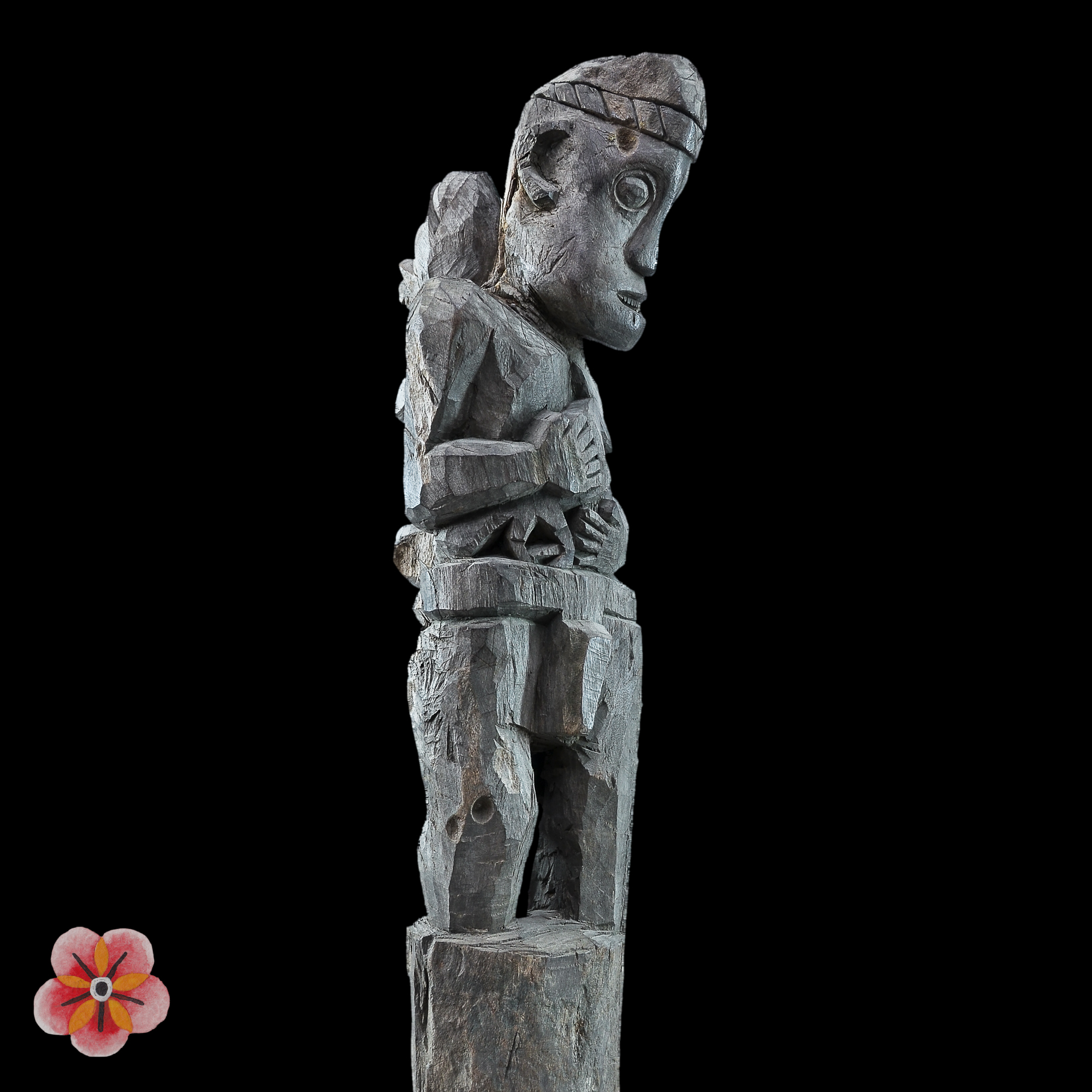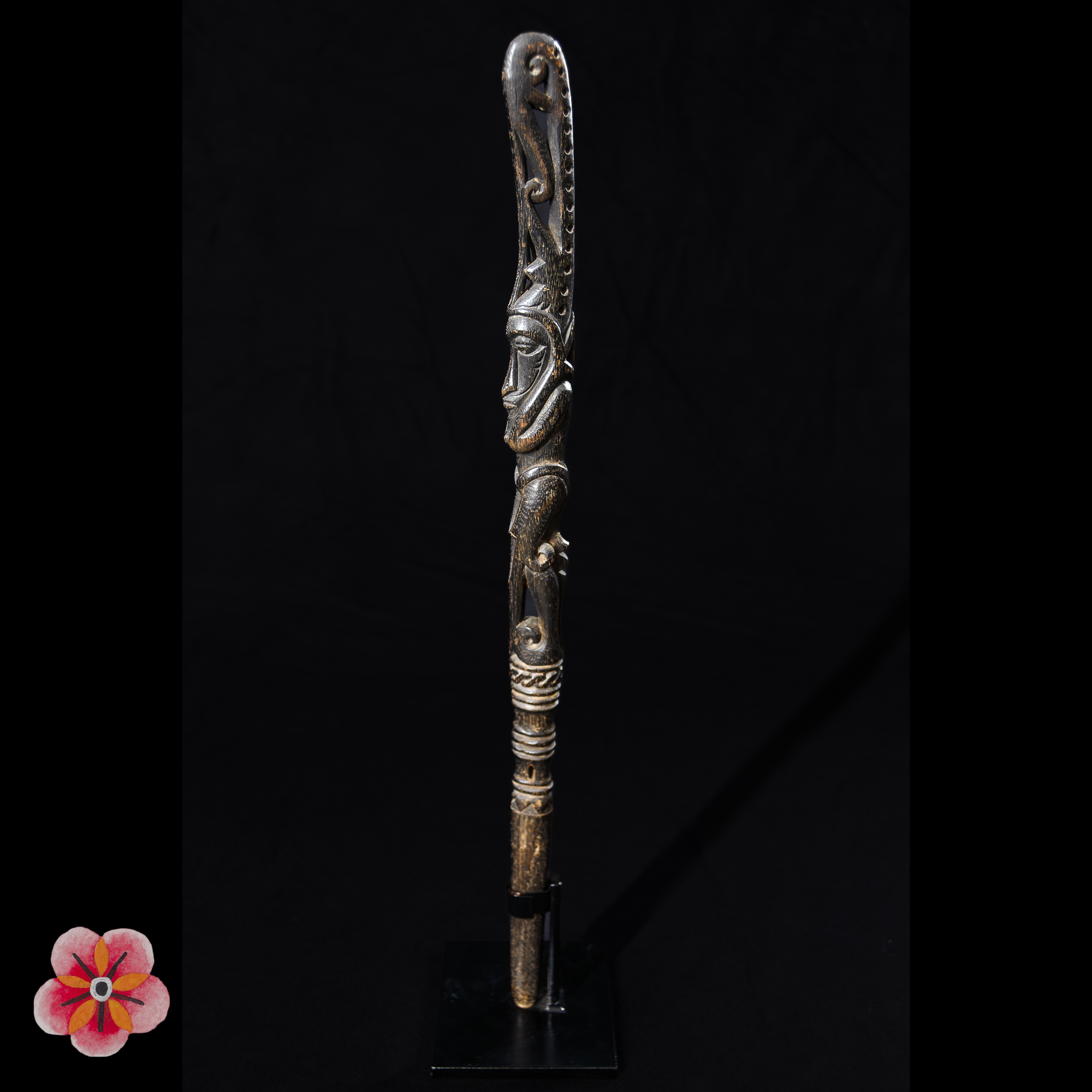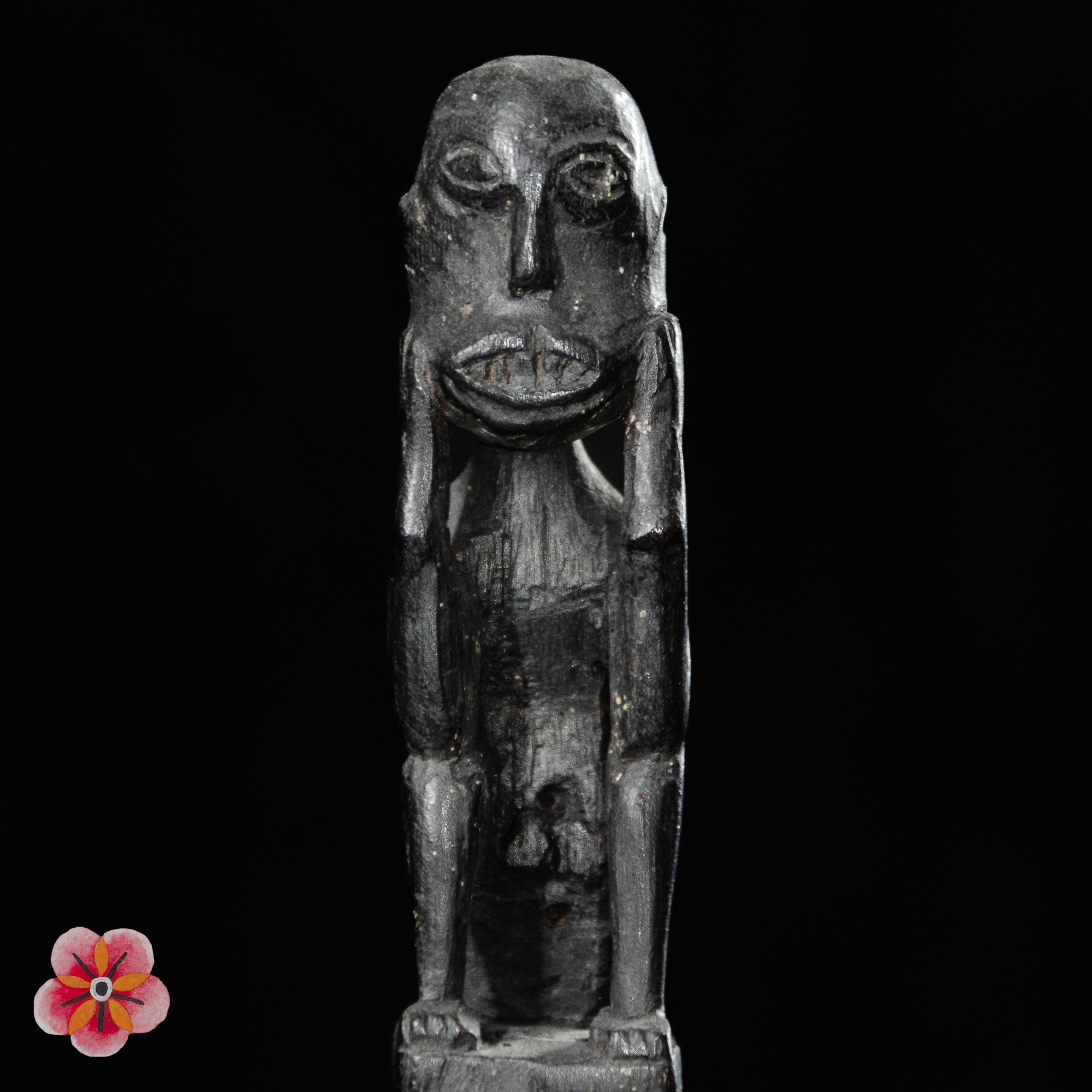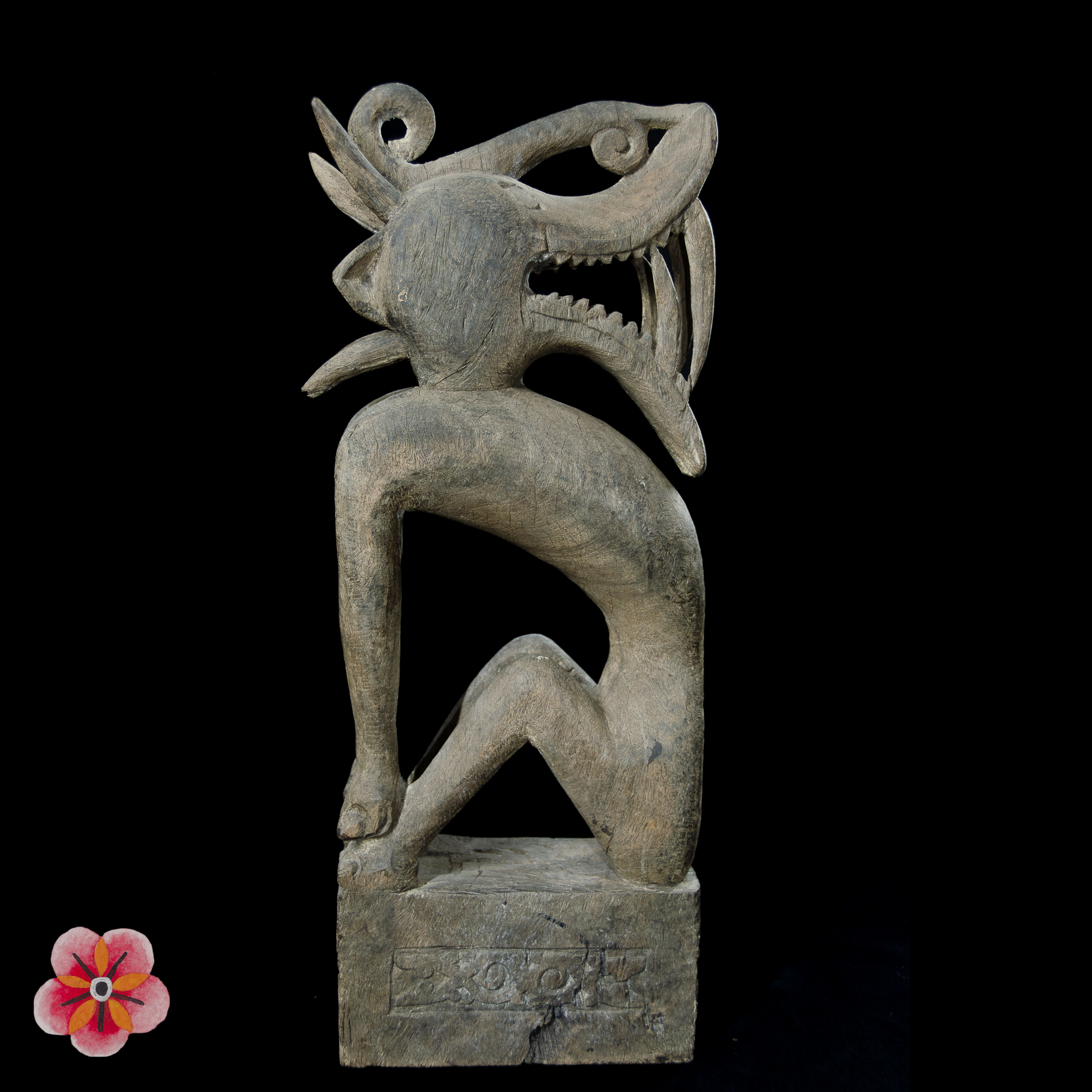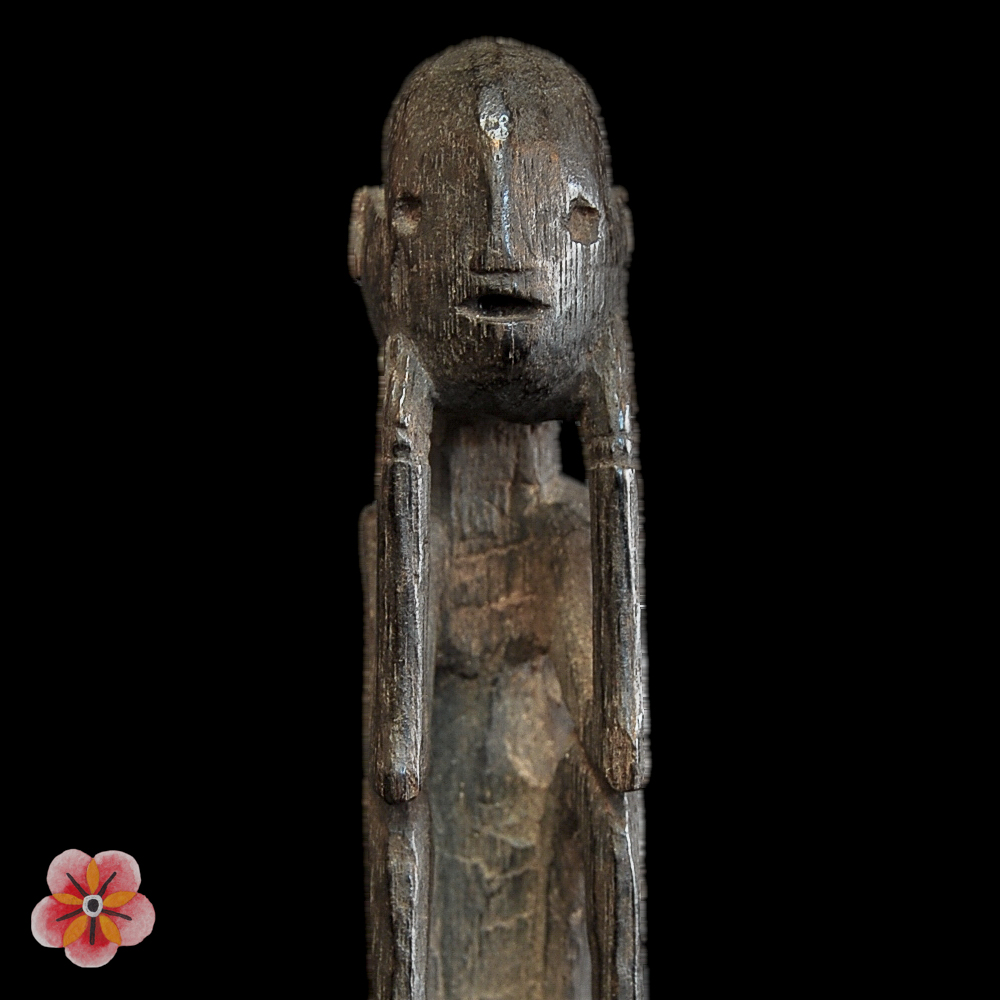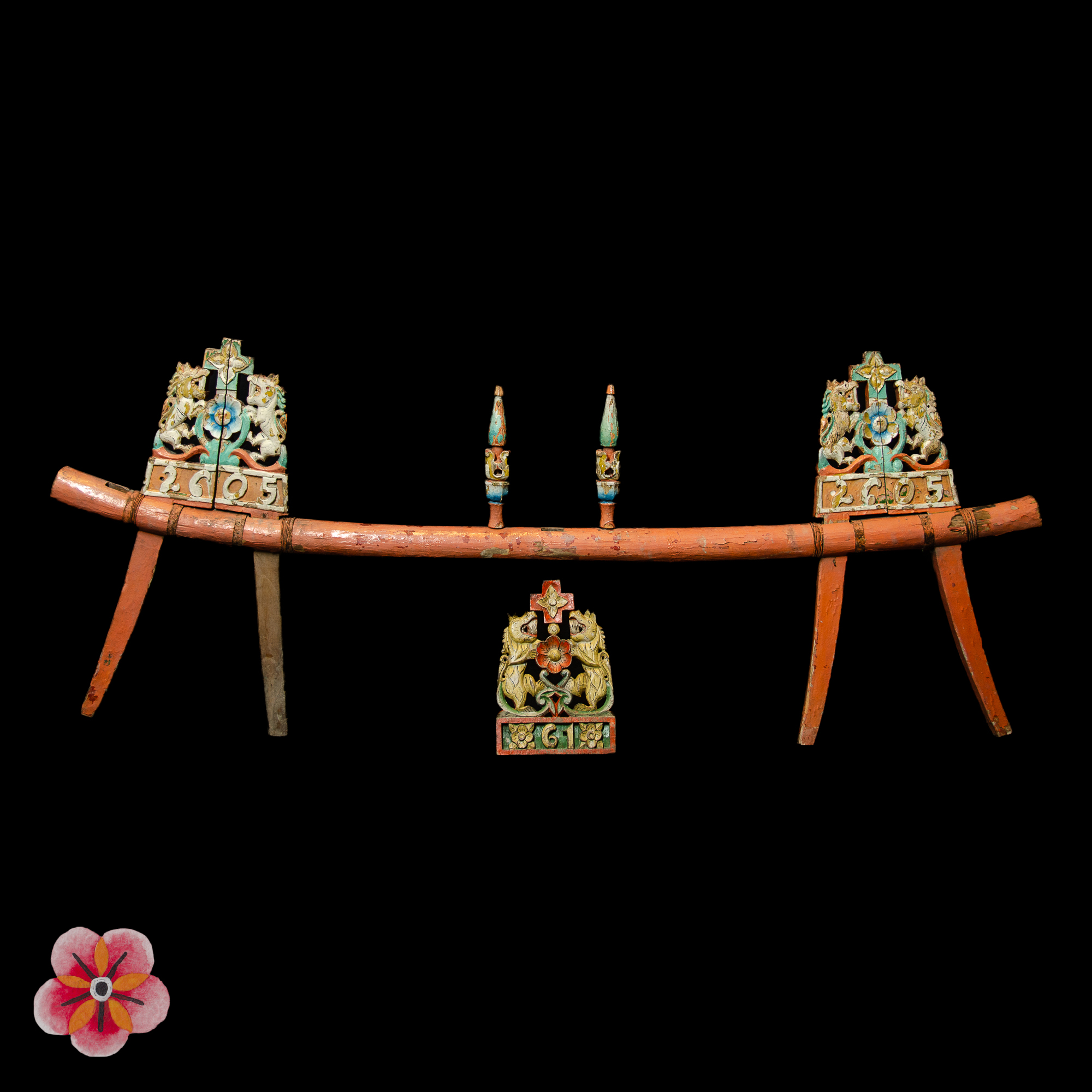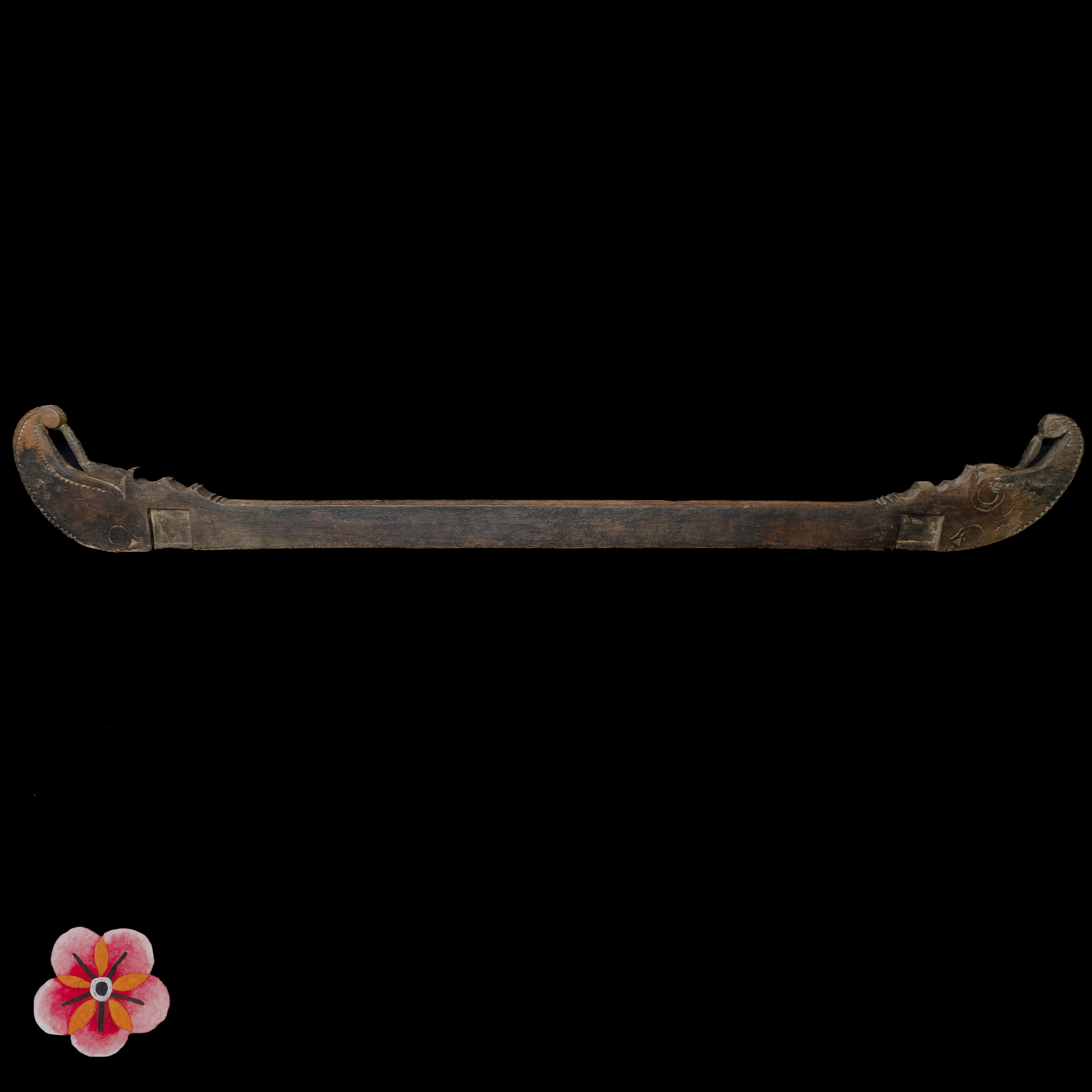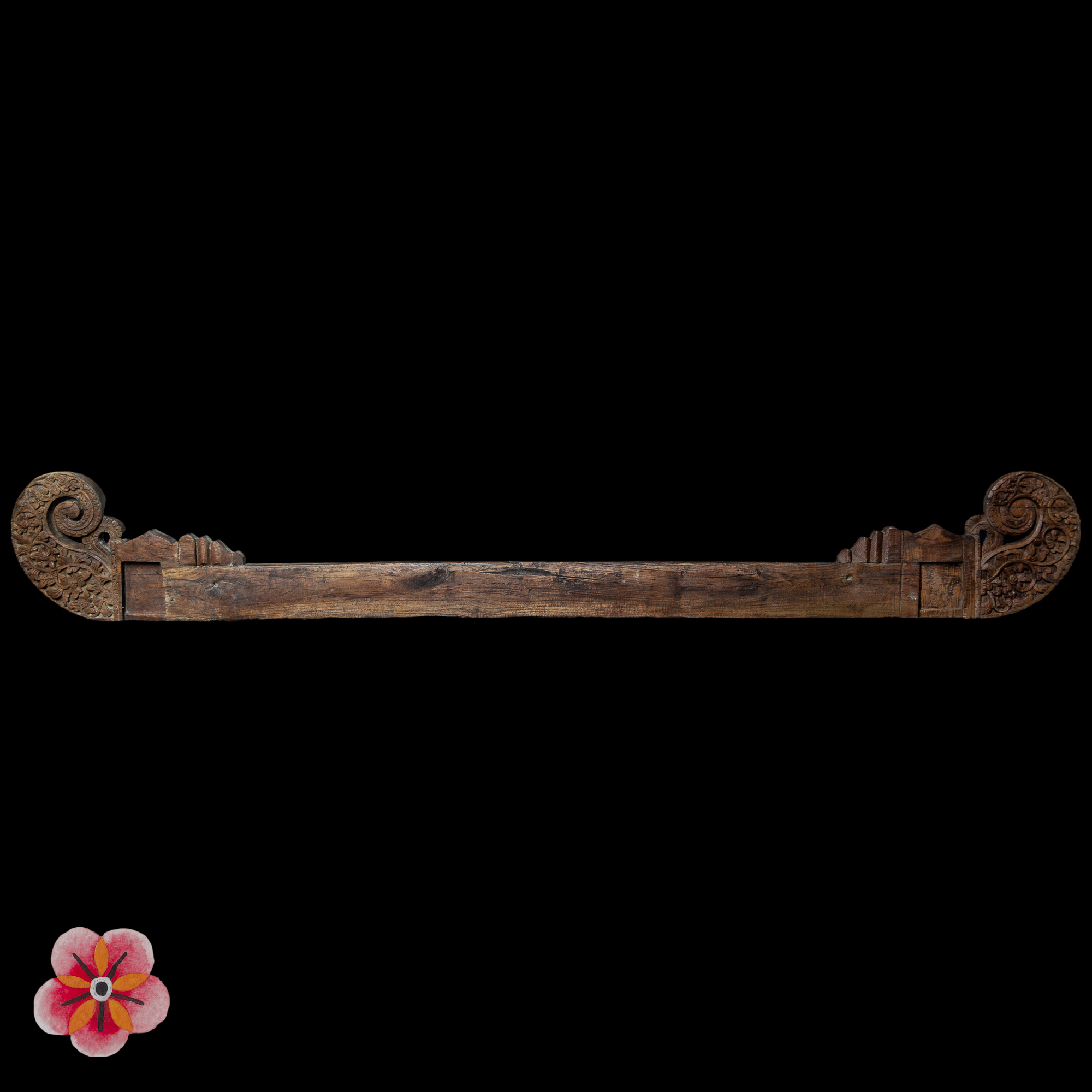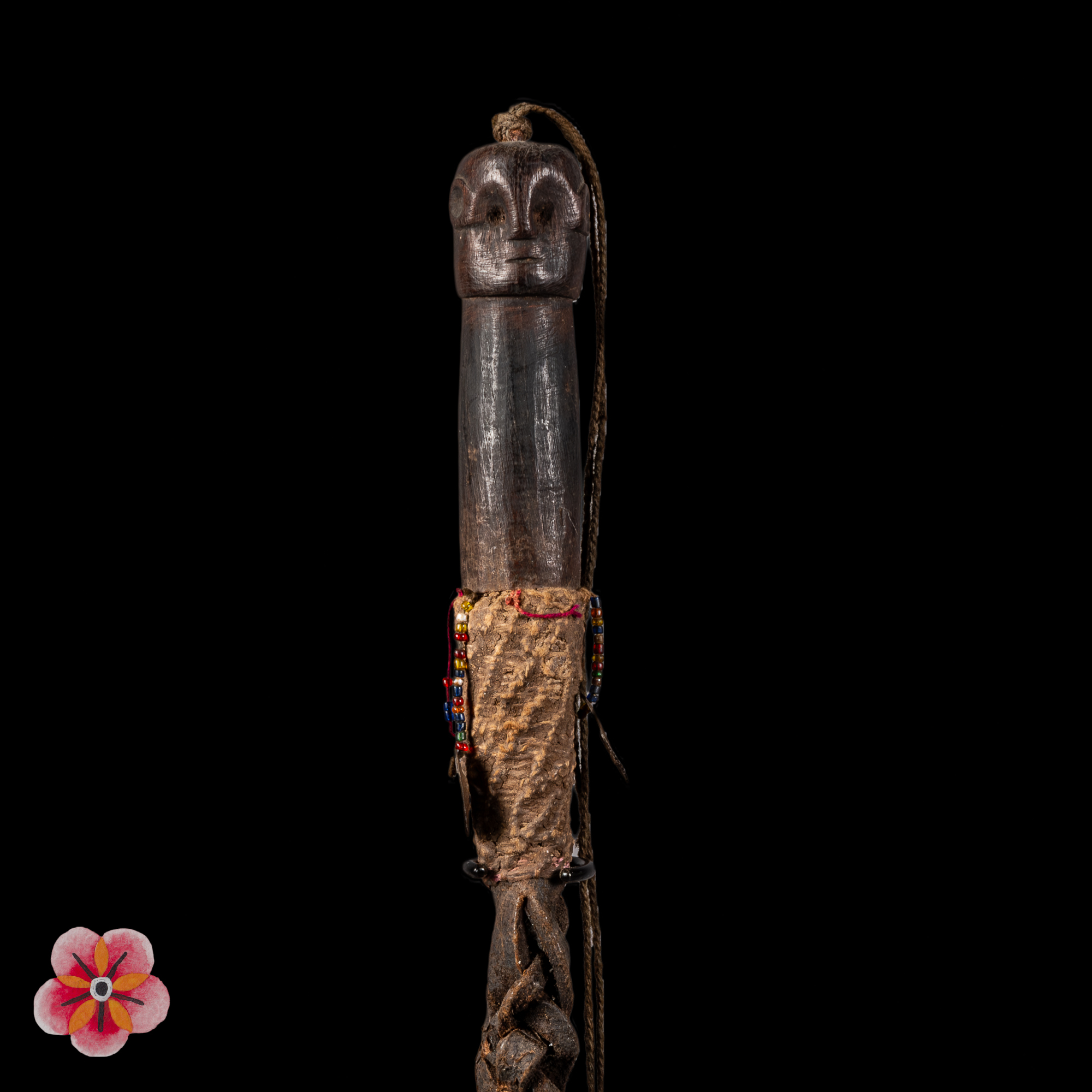Benuaq Dayak Ironwood Sculpture: Man with Salamander
This remarkable ironwood sculpture hails from East Borneo, created by the skilled hands of the Benuaq Dayak artisans. Standing at 112 × 22 × 23 cm, the solid sculpture portrays a man with a salamander perched on his shoulder. The carving technique showcases impressive precision in the facial features, juxtaposed with coarser strokes that form the sturdy, jagged surface of the bodies.
Distinctive and unusual in its formal appearance and dimensions, this sculpture evokes similarities to portative amulets featured in publications like "Hampatongs" (pp. 40, 45, 51, 56). It is believed that this may be a rare sculpture produced for a healing ceremony, as evident from its eccentric bodily features. The figure's face appears sunken and hollow, its mouth crooked, its ear disproportionate, and intriguingly, it possesses six fingers.
These elements of formal distortion are indicative of the artist's pathos and emotional investment in the sculpted representation, a meaningful aspect within the Benuaq community.

